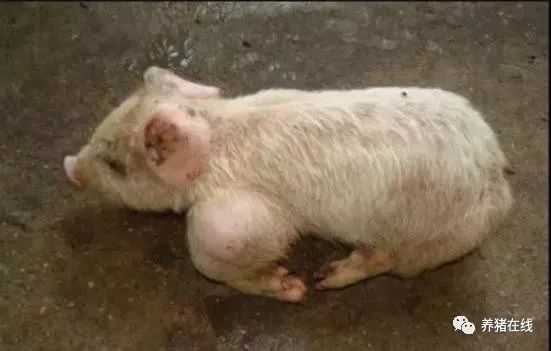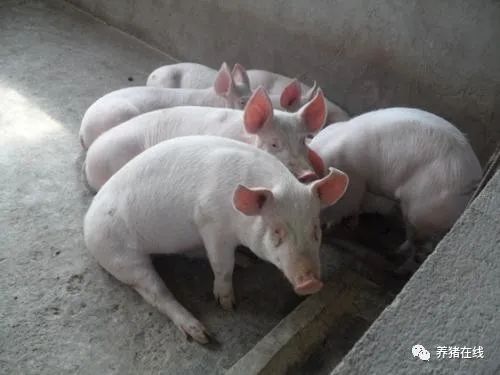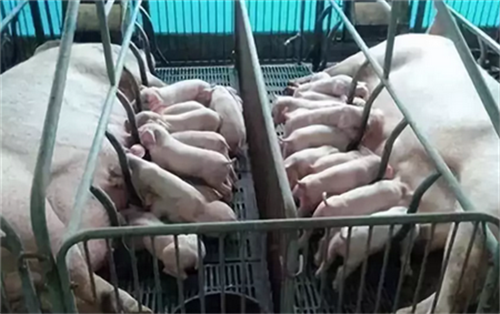What disease is swollen pig joint, how to prevent and cure effectively?
Recently, there are pig farmers to ask, the pig did not fight, trauma, but swollen pig joints, what is the cause? Below we come to analyze vaguely pig joint enlargement may be caused by what disease, how to treat?

Photo: Dr. Kang
What is swollen joint in pigs? in addition to surgical injuries, joint swelling is related to infectious diseases. There are three common diseases:
1. Haemophilus parasuis
Haemophilus parasuis mainly infects young pigs aged 2-4 months and piglets aged 5-8 weeks. Sows and breeding boars often show invisible infection or chronic claudication.
Clinical symptoms: severely diseased pigs with swollen joints, lameness, screaming in pain, trembling, ataxia, lying on the side or limbs before death. Chronic pigs mainly show loss of appetite, cough, dyspnea, limb weakness or claudication.
2. Streptococcosis
Caused by a variety of pathogenic streptococci, the acute type is often characterized by septicemia and meningoencephalitis, and the chronic type is often characterized by arthritis.
Clinical symptoms:
The septic type is characterized by hemorrhagic erythema at the tip of the ear, the abdomen and the lower extremities.
Meningoencephalitis is characterized by dyskinesia, turning in circles, molars and swimming-like movements of the extremities.
Sepsis type and meningoencephalitis type also have arthritis, lameness or hindlimb paralysis in diseased pigs.
The clinical manifestations of arthritis are the most typical; elevated body temperature, joint swelling, pain, high claudication, severe cases can not stand, some hindlimb paralysis, lying on the ground can not rise, palpation joint local fluctuation, a few hardening, skin thickening.
3. Porcine erysipelas is caused by erysipelas suis.
Mainly against 4-6-month-old shelf pigs. Acute claudication, chronic joint swelling is obvious.
Clinical symptoms:
The acute type often lies on the ground, refuses to walk, and walks with stiff gait or lameness.
Most of the chronic type comes from acute, showing swelling, deformation, pain, lameness, stiffness of the whole body, unwillingness to move or lying down.
In order to relieve the pain, the center of gravity is often shifted from one leg to the other, sometimes the limbs contract under the abdomen, showing a bow-back position, unwilling to stand or unable to stand at all.
There are many reasons for joint inflammation, among which Streptococcus parasuis and Haemophilus parasuis have the greatest impact on pigs. Haemophilus parasuis arthritis is similar to that of streptococcal arthritis, which is difficult to distinguish only by clinical symptoms. Therefore, it is necessary to compare the two causes in order to facilitate clinical diagnosis and prevention.
Symptom comparison:
The clinical symptoms of Haemophilus parasuis in pigs are obvious, with sputum cough in the early stage and weak abdominal breathing in the later stage. Without paying attention to observation, it is difficult to see the respiratory range of the diseased pigs.
The clinical symptoms of streptococcal swine disease are complicated. there are four types of clinical symptoms: septicemia type, encephalitis type, lymphocystic type and arthritis type. The typical clinical symptoms of different types of lesions are different, but the type of arthritis is the most common.
Prevention and control measures:
Pig farms should implement multi-point breeding, adhere to the "all-in-all-out" system, prevent cross-infection of all kinds of pigs, and pay special attention to the transmission of sows to piglets.
Strengthen the feeding and management, improve the environmental hygiene inside and outside the pig house, and keep the pig house clean, dry and well ventilated
The feeding density of pigs should be moderate.
Piglets should be disinfected strictly with navel cutting, tooth cutting, tail cutting, ear number and so on. When trauma occurs, it should be treated according to surgical methods in time to prevent wound infection and cause the disease.
It is forbidden to raise cats, dogs and other animals in pig farms, completely eliminate rodents and blood-sucking insects (mosquitoes, flies, etc.), and control the transmission of vector-borne pathogens, which can effectively prevent the occurrence and epidemic of the disease. Get immunized.
The best treatment:
One side is diluted with enrofloxacin injection for ceftiofur sodium for injection or amoxicillin sodium for injection, and the other side is injected with naproxen injection, the effect is faster and more thorough.
Treatment of claudication, paralysis, pain, sprain and trauma caused by other causes: one side was injected with gentamicin sulfate injection to dilute ampicillin sodium for injection, and the other side was injected with naproxen injection.
Related
- On the eggshell is a badge full of pride. British Poultry Egg Market and Consumer observation
- British study: 72% of Britons are willing to buy native eggs raised by insects
- Guidelines for friendly egg production revised the increase of space in chicken sheds can not be forced to change feathers and lay eggs.
- Risk of delay in customs clearance Australia suspends lobster exports to China
- Pig semen-the Vector of virus Transmission (4)
- Pig semen-the Vector of virus Transmission (3)
- Five common causes of difficult control of classical swine fever in clinic and their countermeasures
- Foot-and-mouth disease is the most effective way to prevent it!
- PED is the number one killer of piglets and has to be guarded against in autumn and winter.
- What is "yellow fat pig"? Have you ever heard the pig collector talk about "yellow fat pig"?



